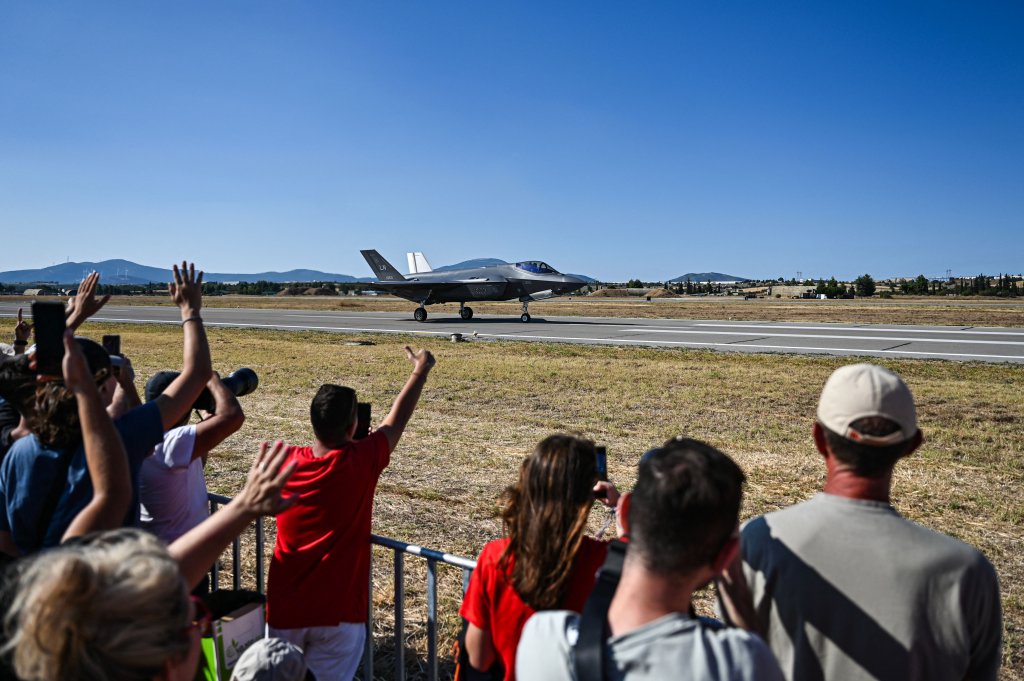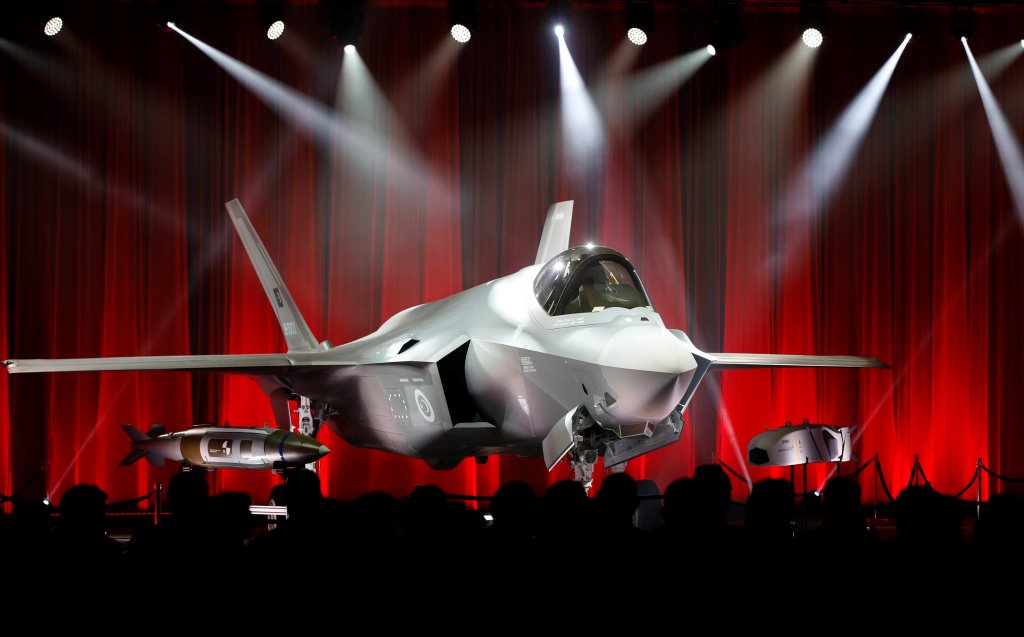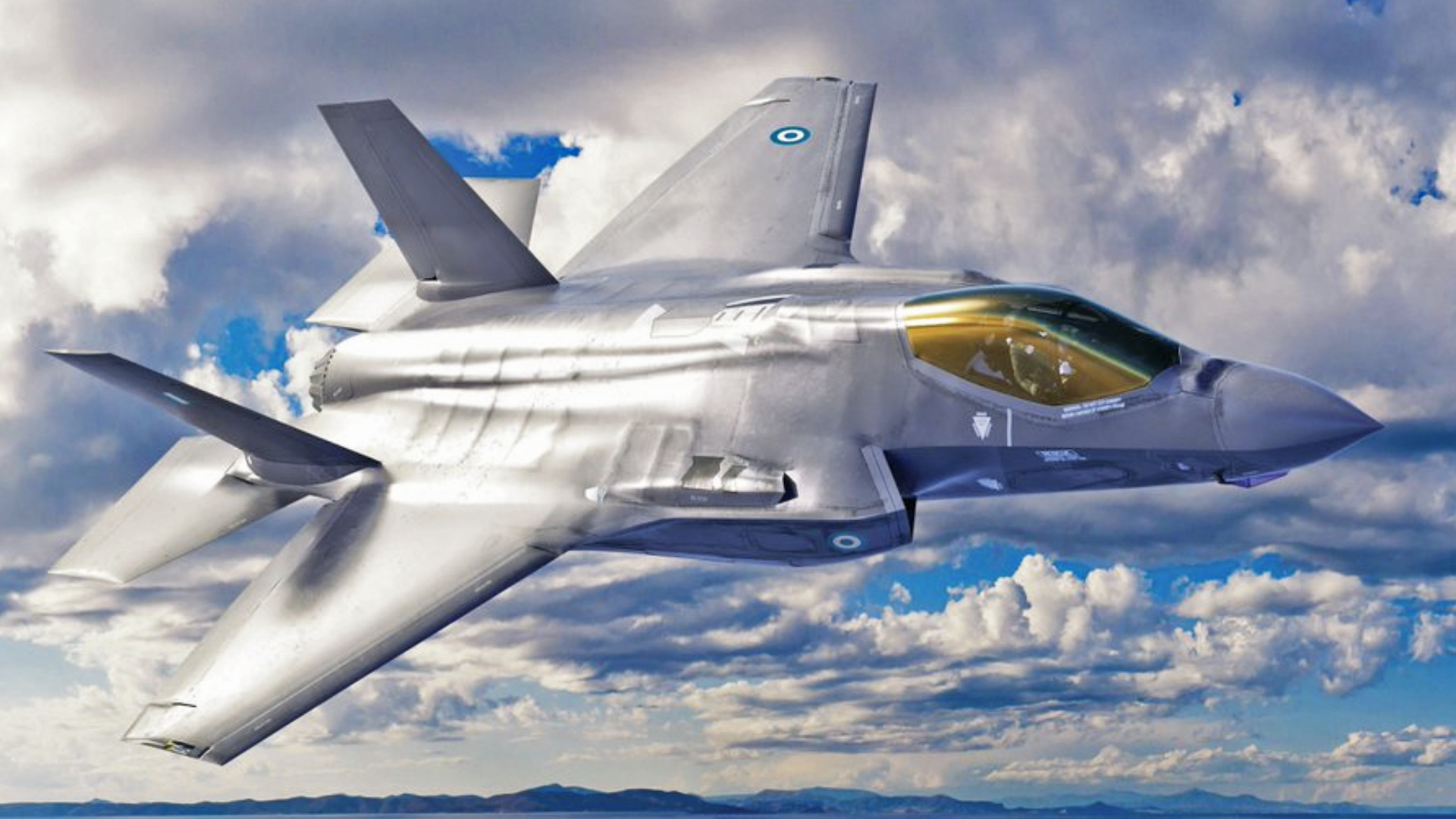Greece has made good on its promise to buy F-35 stealth fighters, confirming today that it will buy an initial batch of 20 of the aircraft at a cost of around $3.5 billion. The decision is an important step in the modernization of the Hellenic Air Force, which has recently inducted other new combat aircraft types, while plans to retire older jets have also been unveiled. The move also has a particular resonance in terms of Greece’s tense relations with regional rival and fellow NATO member Turkey, which was booted out of the F-35 program, after buying Russian-made S-400 air defense systems.
Lockheed Martin confirmed that Athens had signed a Letter of Offer and Acceptance (LOA) finalizing its intention to buy 20 conventional takeoff and landing (CTOL) F-35A versions under a U.S. government Foreign Military Sale.
The LOA also includes an option for 20 additional aircraft, which would bring the total value of the deal up to around $8.6 billion, according to the Greek Ministry of Defense. The jets will be delivered starting in 2028.
“We are excited to welcome Greece into the F-35 enterprise,” said U.S. Air Force Lt. Gen. Mike Schmidt, director and program executive officer at the F-35 Joint Program Office. “The F-35 will provide exceptional capability to the Hellenic Air Force, build interoperability between our allies, and strengthen the combat effectiveness for all of NATO.”
“For several decades, the Hellenic Air Force has been our partner, and it is our honor to continue that relationship as Greece becomes the 19th nation to join the F-35 program,” added Bridget Lauderdale, Lockheed Martin’s vice president and general manager of the F-35 program. “The F-35 is the only fighter suitable to strengthen Greece’s sovereignty and operational capability with allies.”

Official Greek interest in the F-35 dates back to at least late 2020 when reports emerged that Athens had formally requested information from the Pentagon on the acquisition of between 18 and 24 of the jets.
According to the country’s Proto Thema newspaper, the formal Letter of Request (LOR) was sent to the U.S. Department of Defense by Greece’s Ministry of Defense in November 2020. This outlet said it had obtained a copy of the document, which reportedly requested the “immediate purchase” of either new or former U.S. Air Force F-35As, or perhaps a mixture of both.
The LOA now makes it very clear that new-build jets are involved. This makes much more sense from a capabilities point of view — early-production F-35s are of offer less combat capability and are harder to sustain. Although it will take longer for the jets to arrive, they will come in the latest Block 4 configuration, or at the very least with the potential to fully exploit these advances. The original LOR reportedly envisaged the delivery of secondhand jets as early as 2021.

The F-35s will be based at Andravida in the northwest of Greece’s Peloponnese peninsula, where they will be operated by the 117 Combat Wing, which latterly flew F-4E Phantoms before being disbanded.
They will continue a period of major modernization for the Hellenic Air Force, which began to induct French-made Dassault Rafale multirole fighters in early 2022. These comprised a first batch of 18 jets, 12 of them former French Air Force aircraft and the remaining six aircraft being new-build jets. Another six aircraft were later added, for a total of 24 and there are reportedly plans to buy at least 10 more of the Dassault jets.

Since then, Greece has unveiled plans to offload both its early-model F-16s and at least some of its French-made Mirage 2000 fighters, as well as its last F-4E Phantoms, a single squadron of which remains in use. The F-16s and Mirages could be attractive on the secondhand market and there have been reports that the F-16s could end up in Ukraine.

Jim van de Burgt/Wikimedia Commons
Returning to Greece’s F-35s, the latest development takes on a particular irony in the longstanding saga of the Greek-Turkish standoff in the Aegean.
Long before Greece was connected with the F-35, Turkey had planned to buy at least 100 of the jets before it was dramatically ousted from the Joint Strike Fighter program in 2019, after refusing to abandon its purchase of S-400 air defense systems from Russia.

Back in October 2020 the Greek newspaper Estia even reported that the country might receive the F-35s that were ordered by Turkey, at least 14 of which were built and subsequently withheld, before being transferred ultimately to the U.S. Air Force.
Undoubtedly, the modernization of the Hellenic Air Force is very much geared toward offsetting Turkey’s increasing military ambitions in the eastern Mediterranean, and elsewhere. There have also been reports from Greece that the armed forces are particularly concerned by Turkey’s fielding of the S-400, which “could create problems in the daily activity of the [Hellenic] Air Force.” Buying F-35s is one effort to counter this.

As well as the S-400 threat, Turkey currently possesses a numerical advantage in terms of fighter jets, as The War Zone addressed in this previous feature. The Turkish Air Force might not be receiving F-35s — although there are signs that Washington’s position might be shifting in this regard — it does plan to introduce new combat equipment, including the TF Kaan new-generation crewed fighter, the ANKA-3 low-observable flying wing unmanned combat air vehicle (UCAV), and the fighter-like Bayraktar Kizilelma UCAV.

Ankara has also hinted that it might acquire Eurofighter Typhoons, which would offset the Greek Rafales but would still be no match for the F-35’s all-round capabilities. In June, Turkey moved forward with long-standing plans to buy 40 advanced new-build F-16s and upgrade some 80 of its existing Vipers following U.S. government efforts to advance the deal. However, earlier this month, reports emerged that authorities in Ankara were moving to scale back those purchases (to include various ancillary items), which have been valued at around $23 billion in total, and push for more domestic industrial offsets.
As we have also discussed in the past, the combination of Rafales and F-35s will provide the Hellenic Air Force with a balanced fleet that’s importantly also not entirely beholden to a single source country. Were Greece and Turkey to enter into a conflict, the Rafales and F-35s — supported by advanced and upgraded F-16s — would be expected to gain air superiority over the Aegean region, including operating at least partly from dispersed island bases, as well as conducting long-range land-attack missions and anti-shipping strikes.
For anti-shipping strikes and land attack, the F-35 can use the air-launched Joint Strike Missile (JSM), a version of the stealthy Kongsberg Naval Strike Missile, which has also been ordered by the U.S. Air Force, as well as Finland and Japan, with Italy also saying it will arm some of its F-35s with the weapon. Greece would also be a logical customer.

The step-change in capability that the F-35 promises, and the fact that its neighbor is not currently in line to receive the same equipment is something that has been grabbed by the Greek Minister of Health Adonis Georgiadis, who was this week quoted as saying:
“With F-35s, we can go to Turkey one night. One night, you will suddenly find them in Ankara. I am not saying we will actually do it, but Turkey should know that they have nothing when it comes to aviation.”
While Turkey might not be getting F-35s any time soon, the stealth fighter is fast becoming a fighter of choice within NATO and in the European region.
According to Lockheed Martin, by the 2030s, there will be more than 600 F-35s fielded by more than 10 countries in Europe, including two U.S. Air Force F-35A squadrons permanently stationed at Royal Air Force Lakenheath in England, promising useful interoperability across the continent.

However, there may still be hurdles to overcome if Greece is to receive the fully capable Block 4 jets that it wants by 2028. As we recently reported, F-35 deliveries only just resumed after being suspended for around a year due to problems with the Tech Refresh 3 software, or TR-3, which is vital to make full use of the long-awaited Block 4 improvements.
Block 4 will give the F-35 advanced new capabilities, including much-increased processing power, new displays, enhanced cooling, new EOTS and DAS electro-optical sensors, and a range of additional weapons. Perhaps the most critical aspect of Block 4 will be a new radar and electronic warfare suite.
However, it was disclosed earlier this year that the Block 4 upgrade will have to be “reimagined” and that some elements will be delayed until the 2030s. This means Greece may well receive its first F-35s without being able to make full use of the complete menu of Block 4 improvements.
Nevertheless, Greece’s order for the jet further reinforces the F-35’s growing presence across Europe and its fielding by the Hellenic Air Force will provide a significant capability boost, especially when measured against its longstanding rival, the Turkish Air Force, on the other side of the Aegean.
Contact the author: thomas@thewarzone.com
